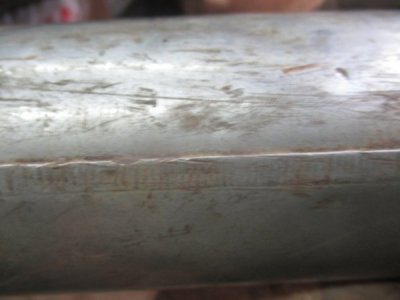this is a piece of 18g mild steel,24" long, rolled into a 2.500" o.d. tube, ends overlapped 1/4" and then it is what I would call "roll seam welded" Each of these lines is a "weld" Can any one clue me in on how this process works? Is there company still around that can do this process? I need 25 of these tubes.
Thanks
Mutt

Thanks
Mutt


